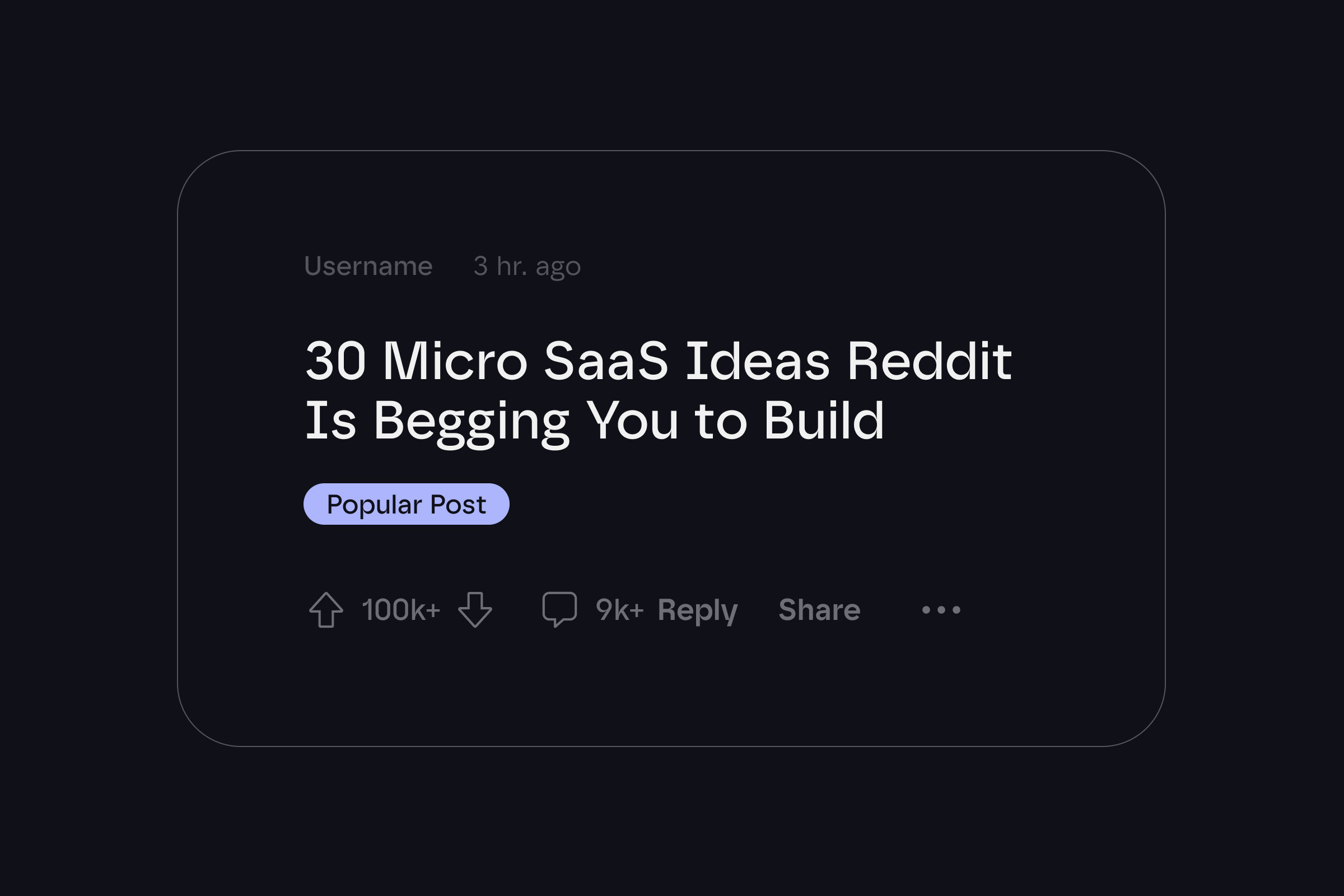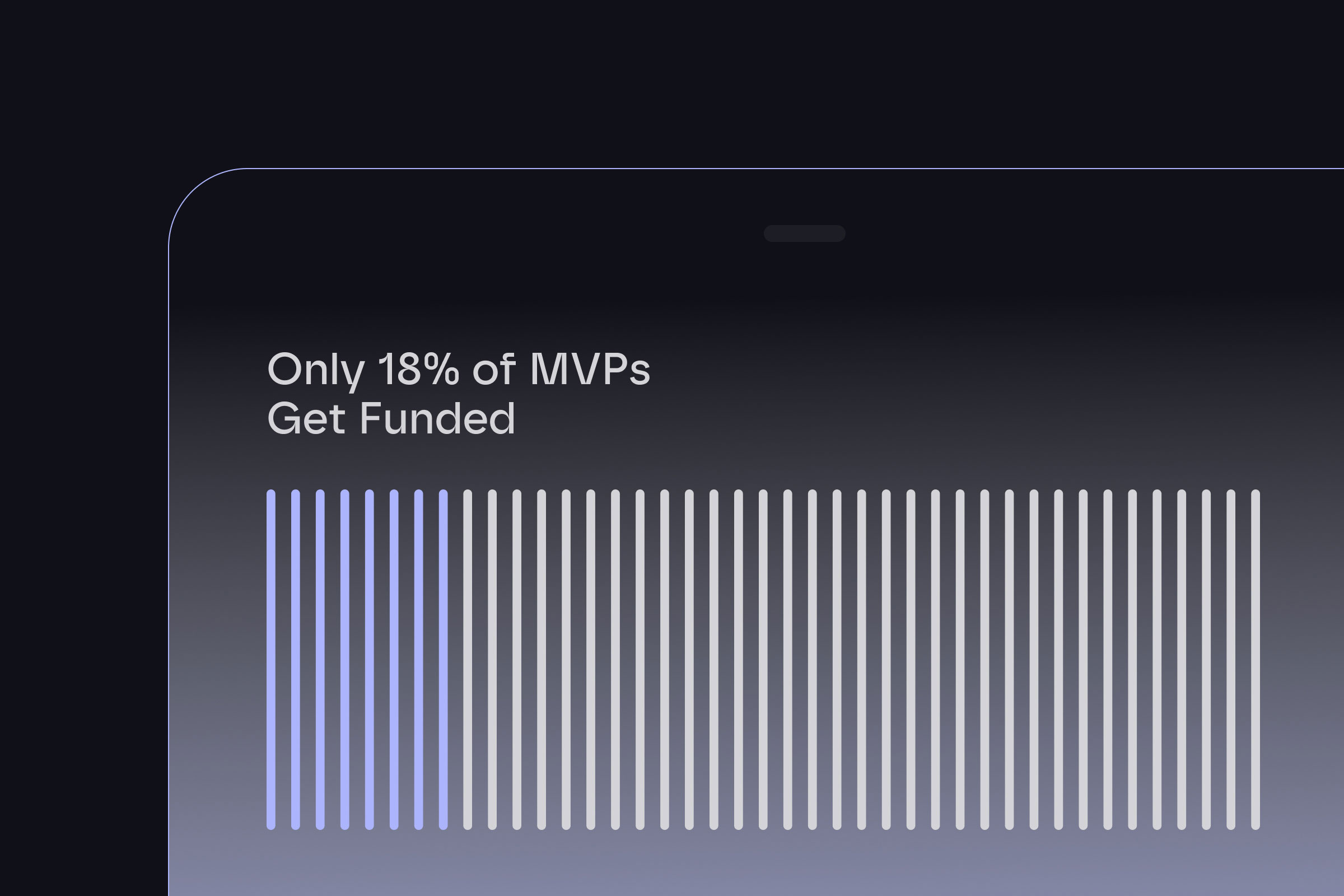Open your project management tool right now.
Count how many features are in your "MVP" backlog. If it's more than 10, you're in trouble. If it's more than 20, you're building a graveyard of good intentions that will never see daylight.
Here's what nobody tells you about successful startups: Instagram launched with zero social features. No comments, no stories, no reels. Just photo filters and sharing.
They added everything else after they proved people wanted to make their photos look better.
What's your "photo filter"—the one thing people desperately want that you can deliver perfectly?
If you can't answer that question in five seconds, you're about to waste months building features nobody wants.
But don't panic—this guide will help you find your focus and ship something that actually matters.
Let's find your edge.
What Should You Actually Focus On When Building an MVP?
Think of your MVP like a first date. You don't need to be perfect—you just need to be interesting enough for a second one.
Your MVP has one job: prove that people have the problem you think they have, and that your solution actually solves it.
Here's what that means in practice:
Solve one core pain point really well
- Pick the biggest headache your users face
- Ignore everything else for now
- Make that one thing work flawlessly
Get feedback, fast
- Launch something people can actually use
- Watch how they really behave (not what they say they'll do)
- Use that data to build what comes next
Stay aligned with your business goals
- Every feature should move you closer to revenue
- If it doesn't help you make money or learn something crucial, cut it
Ship before you're "ready"
- Perfect is the enemy of shipped
- You'll learn more in one week with real users than six months of internal debates
The Step-by-Step Process: How to Actually Pick Your Features
Here's the framework that separates successful MVPs from expensive science projects:
Step 1: Know Your Users Better Than They Know Themselves
Before you write a single line of code, get obsessed with your users.
Talk to them directly:
- Run 20+ user interviews (yes, really)
- Ask about their current frustrations, not your solution ideas
- Find the pain points that make them want to throw their laptop out the window
Create detailed user personas:
- Who are they? (Demographics, job titles, daily struggles)
- What keeps them up at night?
- How do they currently solve this problem?
- What would make them switch to something new?
Pro tip: If you can't clearly explain your user's biggest problem in one sentence, you're not ready to build anything yet.
Step 2: Define Your Unique Value Proposition
Why should someone use your product instead of the 47 other solutions out there?
Your UVP isn't "we're better." It's "we solve this specific problem in a way nobody else does."
Write it down. One sentence. Make it crystal clear.
Step 3: Brain-dump Every Possible Feature
Get everything out of your head:
- Core functionality
- Nice-to-have improvements
- Competitor features you admire
- Wild ideas that might work
Don't filter yet. Just capture everything.
Step 4: Reality Check the Technical Stuff
For each feature, ask:
- How long will this take to build?
- How much will it cost?
- What could go wrong?
- Do we have the skills to pull this off?
Be brutally honest here. Optimistic timelines kill MVPs.
Step 5: Use Frameworks to Prioritize (Not Guess)
This is where most founders go wrong. They prioritize based on what seems cool, not what creates value.
Smart founders use proven frameworks:
The Essential 3: Frameworks That Actually Work
Framework 1: The MoSCoW Method (Your Foundation)
This framework sorts features into four buckets, developed by Dai Clegg at Oracle in 1994 to help teams prioritize in time-boxed projects.
Must-Have: Your product literally can't work without these
- Core functionality that solves the main problem
- Features required for the product to be minimally viable
- Security and basic performance requirements
Should-Have: Important, but not critical for launch
- Features that significantly improve the experience
- Things that give you a competitive edge
- Functionality that supports your business model
Could-Have: Nice additions if you have time and budget
- Polish and convenience features
- Advanced customization options
- Integrations with other tools
Won't-Have: Out of scope for this version
- Everything else goes here
- Helps you resist feature creep
A bus ticket booking app startup used MoSCoW to define their MVP scope systematically.
Must-Have features included: user registration, search functionality, booking and payment systems, and e-ticket generation.
Should-Have features were rating systems, real-time tracking, and notifications.
Could-Have features included taxi integration and loyalty programs, while Won't-Have features encompassed voice assistant integration and complex analytics.
This categorization enabled focused development and stakeholder alignment.
The framework helped manage scope creep and provided clear rationale for feature exclusions.
Pro Implementation Tips:
- Allocate no more than 60% of your resources to Must-haves to ensure project success
- Hold regular stakeholder meetings to align on priorities
- Document why each feature landed in its category
- Be ruthless about moving features to Won't-Have
Framework 2: The Impact-Effort Matrix (Your Reality Check)
Plot each feature on a grid based on:
- Impact: How much will this move the needle for users and business?
- Effort: How much time, money, and complexity will this require?
This gives you four categories:
Quick Wins (High Impact, Low Effort): Build these first
- Often overlooked features that provide immediate value
- User interface improvements that boost satisfaction
- Simple integrations that solve major pain points
Big Bets (High Impact, High Effort): Your main features
- Core functionality that defines your product
- Complex but essential user workflows
- Features that create significant competitive advantage
Fill-ins (Low Impact, Low Effort): Add these if you have spare time
- Nice-to-have polish items
- Minor bug fixes
- Small quality-of-life improvements
Money Pits (Low Impact, High Effort): Never build these
- Complex features with questionable value
- Over-engineered solutions to simple problems
- Features that satisfy internal teams but not users
Real-World Example: When Instagram stripped down from Burbn to focus on photo-sharing, they identified photo filters as a Quick Win—simple to implement but hugely impactful for user engagement. Complex social features like comments became Big Bets for later releases.
Implementation Strategy:
- Use actual data to estimate impact (user interviews, analytics)
- Get technical estimates for effort from your development team
- Regularly re-evaluate as you learn more about your users
- Don't let personal preferences override the matrix
Framework 3: RICE Scoring (Your Data-Driven Prioritization)
Rate each feature on four criteria:
Reach: How many users will this affect?
- Use actual user numbers, not guesses
- Consider both current and projected user base
- Factor in user segments (power users vs. occasional users)
Impact: How much will it improve their experience?
- Score from 1-3 (1 = minimal, 2 = moderate, 3 = massive)
- Base on user research, not assumptions
- Consider both quantitative and qualitative impacts
Confidence: How sure are you about Reach and Impact?
- Use percentages (100% = completely certain, 50% = uncertain)
- Lower confidence should lower overall priority
- Update as you gather more data
Effort: How much work will this require?
- Use actual development time estimates
- Include design, testing, and deployment time
- Factor in technical complexity and dependencies
Formula: (Reach × Impact × Confidence) ÷ Effort = Priority Score
Real-World Example: When Dropbox was prioritizing features for their early MVP, they might have scored file syncing as: Reach (1000 users) × Impact (3 - massive) × Confidence (80%) ÷ Effort (4 person-weeks) = 600 priority score. Meanwhile, collaboration features might score much lower initially.
Making RICE Work:
- Involve multiple team members in scoring to reduce bias
- Use relative scoring rather than absolute numbers
- Update scores regularly as you learn more
- Don't let perfect be the enemy of good—estimates are better than guesses
Making Smart Decisions for Specific Situations
When Your Audience Has Diverse Needs
The problem: You're building an accounting tool, but freelancers want simple invoicing while small businesses need complex reporting.
The solution:
- Pick one user type for your MVP
- Choose the group most likely to pay early and provide feedback
- Build for them specifically, ignore everyone else for now
Example: Focus on freelancers first—they adopt faster, have simpler needs, and can validate your core concept. Add business features in version 2.
For SaaS Products
Your MVP needs to prove people will pay for your solution monthly.
Prioritize features that:
- Demonstrate core value immediately
- Support your revenue model
- Impact key SaaS metrics (retention, engagement, churn)
- Can scale as you grow
Use the Cost of Delay framework: What's the financial cost of NOT building this feature right now?
For Content-Heavy Products (No Users Yet)
When you're starting from zero:
Do extensive research:
- Study competitors obsessively
- Hang out where your potential users complain (Reddit, forums, social media)
- Interview people who currently struggle with this problem
Focus on learning:
- Build the minimum needed to test your assumptions
- Prioritize features that generate the most feedback
- Keep the interface dead simple for new users
Using Data to Make Better Decisions
Voice of the Customer (VoC)
Opportunity Scoring: Survey users about:
- How important is this feature? (1-10)
- How satisfied are you with current solutions? (1-10)
Features with high importance + low satisfaction = opportunities
Analytics After Launch
Once your MVP is live, track:
- Which features get used most
- Where users drop off
- What drives conversions
- How different user segments behave
Use this data to prioritize your next features.
Common Mistakes That Kill MVPs
Building for everyone: Pick one user type and nail their experience
Falling in love with features: Just because you can build it doesn't mean you should
Ignoring technical debt: Sometimes the "quick" solution creates bigger problems later
Not talking to users: Your opinion doesn't matter. Your users' problems do.
Perfectionism: Ship something that works, not something that's perfect.
The Reality Check Most Founders Skip (And Why It's Costing You)
Here's what nobody tells you about MVP prioritization: The frameworks are easy. The execution is brutal.
You'll nail the MoSCoW method on paper, then spend three weeks debating whether user authentication is a "Must-Have" or "Should-Have."
You'll create perfect Impact-Effort matrices, then realize you have no idea how to estimate "effort" for a feature you've never built before.
The missing piece? Experience. Not just knowing the frameworks, but having battle-tested them across dozens of products, hundreds of user interviews, and thousands of feature decisions.
This is where most MVPs die: In the gap between knowing what to do and actually doing it right.
At Greensighter, we've walked this path 150+ times. We know which frameworks work best for SaaS vs. marketplaces. We can spot the difference between a "Quick Win" and a "Money Pit" in your sleep. We've seen every excuse users make and every trap founders fall into.
Most importantly, we help you move fast. While other teams spend months in prioritization meetings, our process gets you from concept to validated MVP in 8-12 weeks.
Want to see how we do it? Let's audit your current feature list and show you exactly what to build first.
Get Your Free MVP Strategy Session.
There's no perfect framework.
The best Product Managers mix and match:
- Use MoSCoW for initial sorting
- Apply Impact-Effort matrix for resource planning
- Validate with RICE scoring for data-driven decisions
- Adjust based on business constraints
The goal isn't to find the "right" answer—it's to make informed decisions quickly and iterate based on real feedback.
Your Next Steps
- Pick your primary user type (be specific)
- List their top 3 pain points (validate with interviews)
- Choose your prioritization framework combination (MoSCoW + Impact-Effort + RICE)
- Cut ruthlessly (your MVP should feel almost embarrassingly simple)
- Build, ship, learn, repeat
Remember: Your MVP isn't your final product. It's your first experiment in a long series of improvements.
Companies that follow MVP principles can reduce development costs by up to 50% while significantly improving their chances of achieving product-market fit.
The Journey Ahead
Building your first MVP isn't just about features and frameworks—it's about turning your vision into something real. Something people can touch, use, and hopefully love.
You're not just another founder with another idea. You're someone who saw a problem worth solving, who decided to risk comfort for the chance to make things better. That takes courage, and it deserves respect.
The path ahead won't be perfect. You'll make mistakes, learn hard lessons, and probably change direction more times than you'd like to admit.
We watched hundreds of founders navigate this journey: the ones who succeed aren't the ones who get everything right the first time. They're the ones who stay curious, listen to their users, and keep iterating with purpose.
Your MVP is just the beginning. It's your first real conversation with the world about what you're building.
Make it count, but remember—it's okay if it's not perfect. Perfect is the enemy of done, and done is what teaches you everything you need to know.
Take a deep breath. Trust your instincts. And remember why you started.
The world needs more people willing to build solutions instead of just complaining about problems. Whatever you're building, wherever you're at in the process—you've got this.
Now it's your time to build something amazing.












